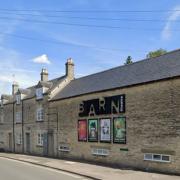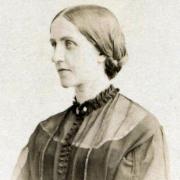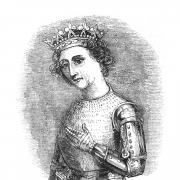These might be peaceful hills and vales, but our contribution to the war effort was considerable

It was the most destructive war in human history. It lasted for six years and cost a conservative estimate of 60 million lives, the majority of them non-combatants. It’s easy to understand why politicians were keen to avoid a WW3 once WW2 had finally been put to bed. It was also easy to understand why those who’d survived wanted to celebrate the end of that conflict. No doubt those revelries went on long into the night in the Cotswolds, as everywhere else.
Two years ago, we marked a century since the end of the Great War. With Remembrance Sunday (November 8) and Armistice Day (Wednesday, November 11) around the corner once more, I’m turning the clock back to the 1939-45 war, which finally came to an end 75 years ago this year. I want to consider not just what a shattering experience it was and therefore why we should never forget it, but also what effect it had on the Cotswolds.
As I began writing this in April, we’re in the midst of the Corona Virus epidemic, which is already looking like it could be the greatest crisis facing this country since the war, one of those extremely rare occasions when normal life is swept away. I’ve sometimes wondered what living through a war must be like. It feels like we’re getting an inkling right now.

There were two celebrations marking the end of WW2, VE Day and VJ Day. VE (Victory in Europe) Day, on May 8, 1945, was the day people celebrated the Allies’ formal acceptance of Germany’s unconditional surrender on the previous day. This year’s May Day holiday was moved from Monday, May 4 to Friday 8th so we could celebrate again (and remember) on that 75th anniversary. With an embargo imposed on gatherings as we struggled to comprehend, and cope with, our latest crisis, commemorations became low-key and more reflective, rather than celebratory. That was maybe no bad thing.
Of course, big events were planned throughout the Cotswolds and elsewhere, which had to be abandoned. Pubs, clubs and bars were going to stay open longer to mark the anniversary, with those holding licences until 11pm remaining open until 1am and presumably folk staggering home on the morning of the 9th just as they did 75 years previous. Pubs in Gloucester, Cheltenham and Stroud were among those announcing they would be staying open: the good old local boozer, always at the heart of its Cotswold community. Best laid plans as they say…

The war did not end though in May, as Japan fought on until atomic bombs were dropped on Hiroshima and Nagasaki in August. VJ (Victory over Japan) Day, on August 15, 1945, marked the day on which Imperial Japan surrendered, although the final surrender documents were not signed until September 2 on the deck of the US battleship USS Missouri. Given the war had begun on September 1, 1939, it had lasted a full six years. My late father-in-law was away from these islands for five years on military service, fought at Tobruk and 2nd El Alamein, returned home to marry in November ’44, then promptly left again. My beloved wife was born 20 days after the ceremony aboard the Missouri. She was nearly a war baby.
Against this backdrop of international turmoil and ferocious warfare, just what happened in the Cotswolds? Was it business as usual in the land of stone cottages, agricultural practices, spired churches and rolling hills? Read on, for it was anything but.
Oxford was largely ignored by the Luftwaffe due to its lack of heavy industry, although the city experienced an influx of refugees. Colleges became temporary military barracks and training centres prior to deployment. People sometimes overlook the real and present threat of a German invasion in 1940. Plans (Operation Sealion) had been prepared, but these largely overlooked our part of the world, although there was a section on the ‘ridges of central England’ in which it drew attention to Oxford: ‘the famous ancient university town (80,500 inhabitants) serves an extensive catchment area’. OK. we couldn’t expect them to appreciate it was a city.

Bath was not so fortunate and was battered in the so-called Baedeker Raids, a tit-for-tat bombing campaign aimed at targets with a cultural or historical significance. The Bath Blitz caused over 400 deaths with over 19,000 buildings damaged or destroyed. Cheltenham was hit for the first time on December 11, 1940, a raid that killed 20, with many others injured and 600 bombed out of their homes. Eighteen months or so later, another raid (July 27, 1942) killed a further 11.
Cheltenham though provided solace to the fightback. The Everyman Theatre carried on, becoming a Garrison Theatre, including for US soldiers based at Pittville. The US Army Services of Supply (European Theatre of Ops) established its primary HQ at Cheltenham under the direction of Lt Gen John CH Lee. The extensive flats of Cheltenham Racecourse were transformed into a giant storage depot (trucks, jeeps, tanks and artillery). Most of this material was shipped to Normandy for or after D-Day. Lee and his staff had their offices/residences at Grade II Listed, mid-1850s Thirlestaine Hall (1942-45).
Returning to VE Day, what we should have been celebrating on May 8 was 75 years since the war in Europe ended, a war which began with Germany’s invasion of Poland (September 1, 1939) and saw Britain declare war on Germany two days later. Having survived the Dunkirk Evacuation and the Battle of Britain in 1940, our prospects were enhanced in 1941 when both Russia and the US joined the Allies, having been attacked by Germany and Japan respectively. D-Day (June ’44) saw the opening of the much-awaited Second Front, and tons of that Cheltenham material heading across the Channel, although it took almost another year before Germany surrendered and VE Day took wind.

It wasn’t just the military moving into the Cotswolds. There were plenty of other organisations that headed into an area that was away from centres of population and heavy industry and was therefore not systematically targeted for destruction. Rodmarton Manor, near Cirencester, became an evacuation point for a London Catholic School, so 150 children moved in. It also became a maternity home (1943-45), due to a shortage of midwives available to attend people’s homes. The grounds at Woodchester Mansion, near Nympsfield, became a billet for Canadian and US troops, whilst the mansion itself was used by St Paul’s teacher training college. Stowell Park was used for evacuees from Great Ballard School.
Meanwhile, at Woodstock, magnificent Blenheim Palace, Britain’s only non-royal stately home dubbed a ‘palace’, was also taken over by 500 schoolboys from Malvern College (1939-40), one of whose dormitories was the Long Library (Malvern College itself had been requisitioned for ‘national purposes’). The Great Hall became the school’s refectory. The Marlborough family, still in residence, decamped to the East Wing. Blenheim had a variety of guests during the war, as the military also moved in, for example in early June 1940 when a Canadian Armoured Division rolled up. The Canadians were an exuberant lot and their favourite hostelry was The Bear in Woodstock, which required a bit of ‘making good’ afterwards. The Malvern boys meanwhile finished their summer term and promptly headed for Evesham to help get the fruit harvest in. Another influx hit Blenheim in September ’40, when most of MI5, almost 1,000 people, arrived, staying until 1944. It was supposed to be hush-hush but plenty of locals seemed to know they were there. The last lot arriving was the British Council, aiming to spread British values around the globe.

That was all very well, but what would have happened to British values in the event of invasion? Well, Worcester was chosen as the seat of an evacuated government. The Prime Minister, War Cabinet and 16,000 state workers would have moved to Hindlip Hall, a stately home three miles north of the city. Parliament itself would have been temporarily housed in Stratford-on-Avon. A fuel storage depot was also built over 1941/2 for the government on the east bank of the Severn about one mile south of Worcester, whilst two petroleum storage depots were constructed in Gloucester. RAF Worcester, a relief landing ground (RLG) was located east of Northwick, around 1¾ miles north-east of Worcester city centre. Our part of the world clearly had much riding on it.
RAF stations popped up everywhere. A large area to the east of the town became RAF Moreton-in-Marsh, which was a training airfield, largely used by Wellingtons. Thirty-eight men flying in or out of here died in the war and that former airfield is now the Fire Service College. RAF Kemble (now Cotswold Airport) became one of the main bases for the aircraft ferrying ops of the Air Transport Auxiliary, whilst RAF Fairford was used to lift British troops for Operation Market Garden (as in A Bridge Too Far).
Much industry moved into Witney as factories departed London to avoid the Blitz. Engineering firms such as Crawford Collets Ltd & the West London Optical and Tool Company both moved to Witney over 1940-41. Crawford Collets moved its imported workforce into the old union workhouse just west of the town where the chapel became the factory canteen. Swindon also saw an influx of new industries with Vickers-Armstrong and Plessey both moving into the area, whilst the town’s famous GWR Works was partly turned over to war production.
As Churchill himself said to cheering crowds on VE Day: “God bless you all. This is your victory! It is the victory of the cause of freedom in every land. In all our long history we have never seen a greater day than this. Everyone, man or woman, has done their best. Everyone has tried. Neither the long years, nor the dangers, nor the fierce attacks of the enemy, have in any way weakened the unbending resolve of the British nation. God bless you all!”
Let’s continue to use that freedom wisely and respectfully. It was hard won.
Chronology
1939 Germany invades Poland (1st Sep), Britain declares war on Germany (3rd Sep).
1939 Malvern College occupies Blenheim Palace.
1940 Evacuation from Dunkirk (May/Jun), Battle of Britain and start of the Blitz.
1940 1st raid on Cheltenham kills 20. Evacuated industry starts arriving in Witney.
1941 Germany attacks Russia (June) and Japan attacks the US (Dec).
1941 Fuel storage depot built 1 mile south of Worcester.
1942 1st major British victory of the war, 2nd El Alamein (Oct/Nov).
1942 Raid on Cheltenham kills 11. Lt. Gen. Lee & staff occupy Thirlestaine Hall.
1943 Russians defeat the Germans at Stalingrad on the Eastern Front.
1943 Rodmarton Manor becomes maternity home.
1944 D-Day (Jun), sees the Allies open the 2nd Front. Battle of Monte Cassino (Italy).
1944 MI5 vacates Blenheim, having been there since 1940. Arnhem airlift (Fairford).
1945 German surrender and VE Day (May 8). Japanese surrender and VJ Day (Aug 15).
References
• Our Uninvited Guests (J. Summers, 2018)
• German Invasion Plans for the British Isles 1940 (reprint, Bodleian, 2007)
• The History of Cheltenham’s 5 Twin Towns (S. Roberts, Cotswold Life) British History Online (www.british-history.ac.uk) Gloucestershire Live (gloucestershirelive.co.uk) Historic England (historicengland.org.uk)



























